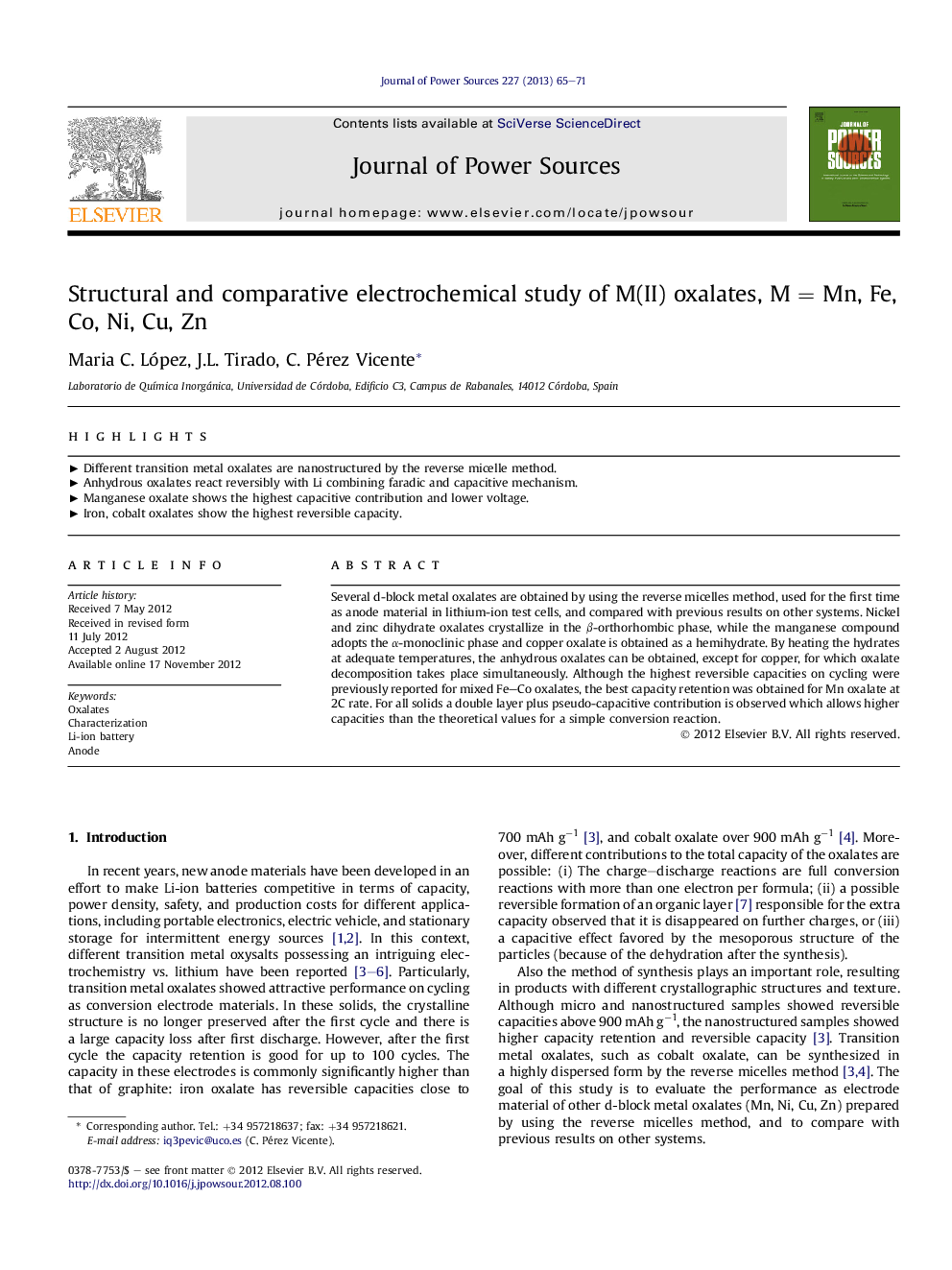| کد مقاله | کد نشریه | سال انتشار | مقاله انگلیسی | نسخه تمام متن |
|---|---|---|---|---|
| 1288293 | 1498005 | 2013 | 7 صفحه PDF | دانلود رایگان |

Several d-block metal oxalates are obtained by using the reverse micelles method, used for the first time as anode material in lithium-ion test cells, and compared with previous results on other systems. Nickel and zinc dihydrate oxalates crystallize in the β-orthorhombic phase, while the manganese compound adopts the α-monoclinic phase and copper oxalate is obtained as a hemihydrate. By heating the hydrates at adequate temperatures, the anhydrous oxalates can be obtained, except for copper, for which oxalate decomposition takes place simultaneously. Although the highest reversible capacities on cycling were previously reported for mixed Fe–Co oxalates, the best capacity retention was obtained for Mn oxalate at 2C rate. For all solids a double layer plus pseudo-capacitive contribution is observed which allows higher capacities than the theoretical values for a simple conversion reaction.
► Different transition metal oxalates are nanostructured by the reverse micelle method.
► Anhydrous oxalates react reversibly with Li combining faradic and capacitive mechanism.
► Manganese oxalate shows the highest capacitive contribution and lower voltage.
► Iron, cobalt oxalates show the highest reversible capacity.
Journal: Journal of Power Sources - Volume 227, 1 April 2013, Pages 65–71